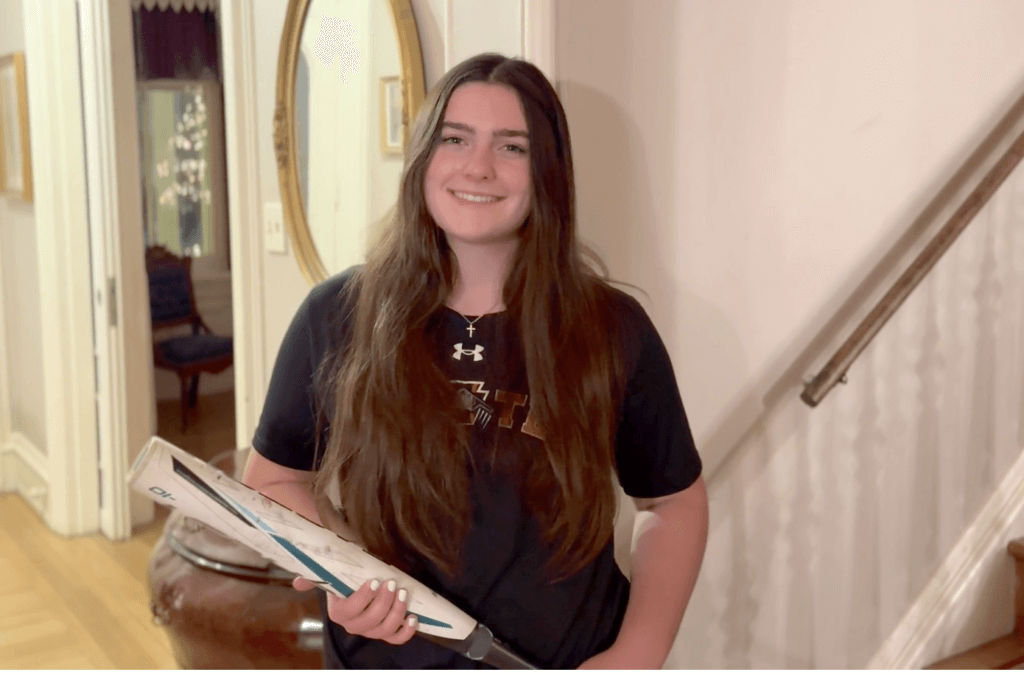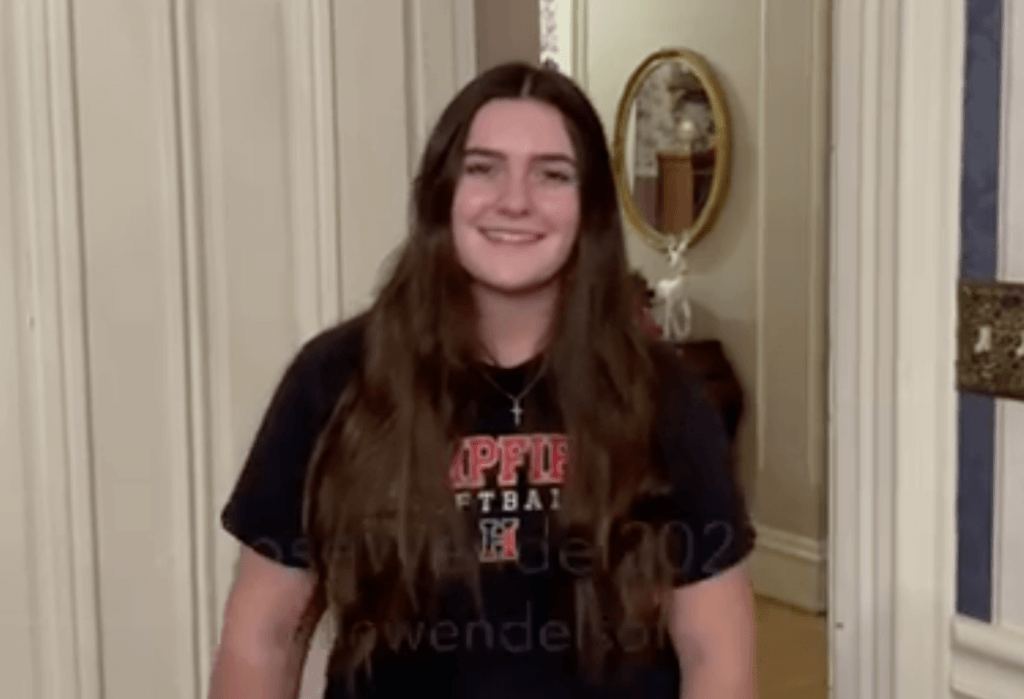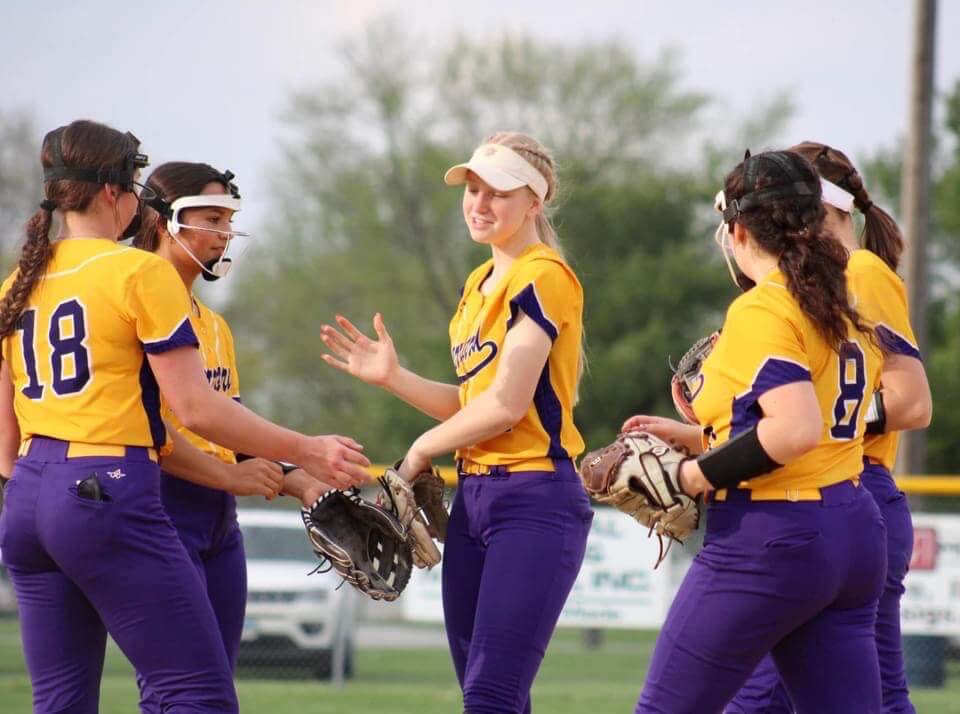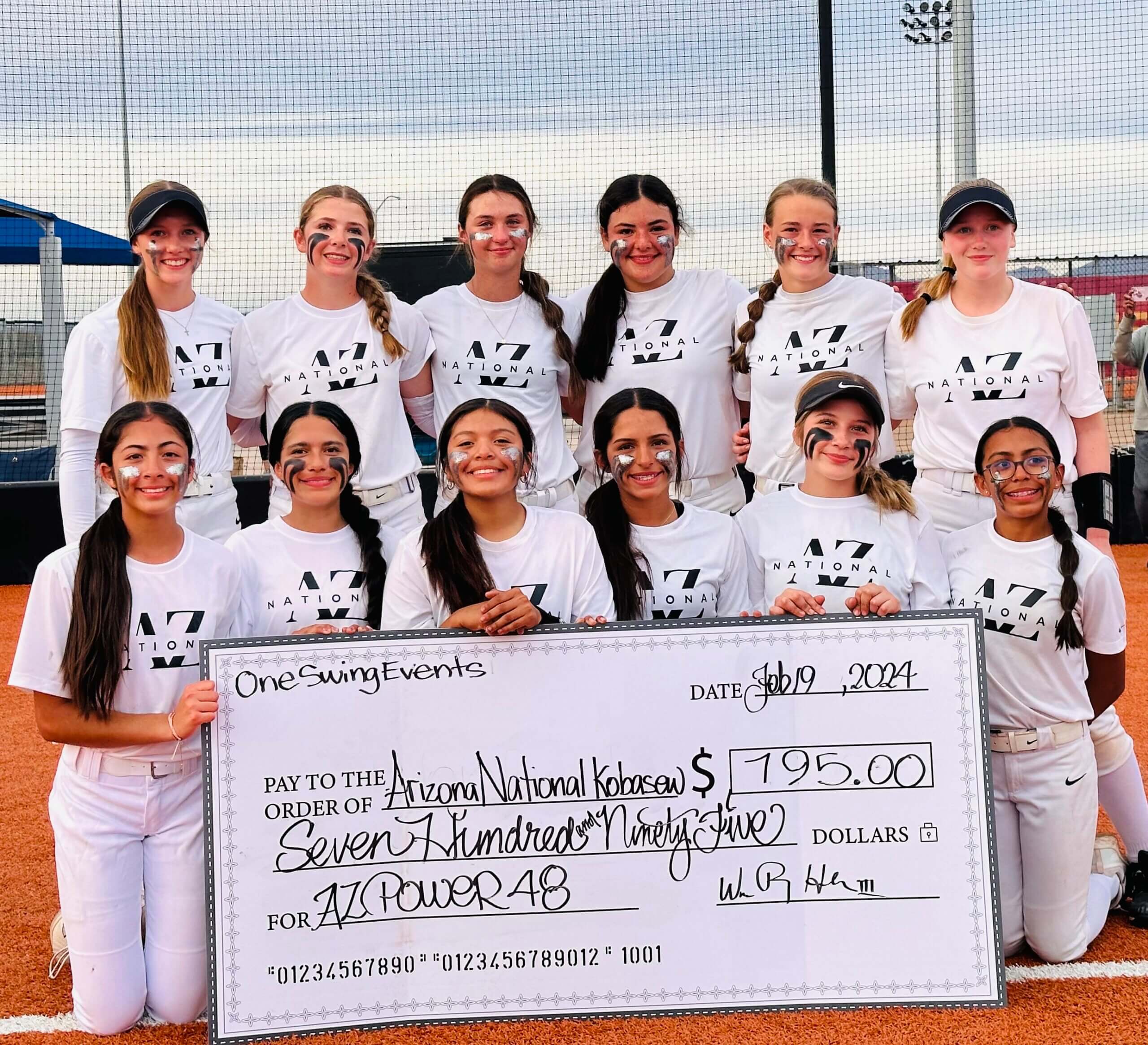
Kelly Gatwood is the Associate Commissioner for Sports Services at Conference USA. Gatwood is a former college softball player and coach and has worked as a C-USA administrator since 2009. She also is the chairperson and one of the longest-tenured active members of the NCAA Division 1 Softball Committee.
That committee is the group charged with seeding and selecting every team in the 64-team Division 1 NCAA tournament.
Following Sunday night’s selection show, Gatwood sat down with Extra Inning Softball for an exclusive 1-on-1 conversation via Zoom. During the interview, we touched on a number of topics included individual teams and some of the bigger questions that arose as the tournament bracket was revealed. Additional topics included the teams who were the “last four in” and “first four out”, as well as the committee’s emphasis on a team’s high-ranked wins and overall body of work.
This interview has been lightly edited for length and clarity.
Extra Inning Softball: Let’s start with Alabama. What was the criteria that was most relied on; what ultimately got them to that 5-seed?
Kelly Gatwood: It’s pretty evident that there’s always parity in college softball, but this year, there was a lot of parity, and particularly in those top 16 seeds. We have a selection criteria that we follow. And we did that just like we do every year, but we had to find something to dig deeper. And so the focus, you know, was on top 10 wins. And when we started focusing on top 10 wins, Alabama continued to rise to the top. They’ve got six top 10 wins, nine top 25 wins, and so to us, that proved that they could beat the top teams, so they deserved to be in the top. And for us, you know, you’re talking about the top eight seeds in the whole entire bracket. So if you can’t consistently prove to us that you can beat the top teams, then you don’t deserve to be there. And with Alabama, they’ve got quality wins against Florida State, Duke, LSU twice, Tennessee, Texas, and then even outside of the top 10 but still within the top 25, Arkansas twice and Auburn and so we just felt like their total body of work was really strong and that they deserved to be in that spot.
Extra Inning Softball: Was that criteria, the top-10 win, specific to the Alabama situation or was that metric relied on when you’re seeding the entire tournament?
Kelly Gatwood: Obviously, for the entire tournament [field], you’re not going to see top 10 wins all the way through. But particularly in the top eight because that’s what we’re looking at. So those top eight teams that are really strong, can they beat the top 10 teams, can they beat the top teams in the bracket? And that’s what we looked at. So, you know, there was a bit of a natural break that happened around #8 or #9 that you can see in the Duke/Stanford [seeding]. And so our focus had to shift a little bit to say, okay, the teams that we’re looking at, there’s not as many that have top 10 wins. And so our focus had to be more on total body of work, what they looked like in the top 25, the top 50, strength of schedule, all those things. [But] it was definitely a focus for us in the top 10. Again, the parity is so strong this year. And in my four years on the committee, this was by far the hardest time we had with the bracketing and seeding and we just felt like, you look at all these teams and they match up pretty well. [We had to determine] ‘what differentiates one team from another’ and ‘what puts one team over another’ and we felt like top 10 wins was really important.
Extra Inning Softball: When it comes to seeds 5-8, were there any other metrics that, so to speak, ‘rose to the top’ along with the top-10 wins to help differentiate the top eight from seeds 9-16?
Kelly Gatwood: We know that consistency is key. When we’re looking at a bracket, you’ve got to evaluate the teams all the same. We certainly applied our selection criteria to every single team that we seeded and put into the bracket, even past the top 16. For the 5-8 [seeds], I would say that the #1-#8 is very consistent, because you’re talking about teams that have the opportunity to host Supers and that’s a big deal. The focus for us [was] quality wins, when you look at the top 10 and top 25. What have they done against the top teams in the bracket?
And, you know, for Alabama, they had six top 10 wins. That is really impressive. UCLA had six, Oklahoma had thirteen, Florida had four, Tennessee had four, Washington had four, Duke had two… so when you look at those numbers, that’s impressive. Alabama has proven to us that they can beat good teams.
Extra Inning Softball: Last year, one heavily-relied-on metric was bad losses; how big of a relied-upon metric was bad losses this year?
Kelly Gatwood: I think it’s something that we always look at. But especially in this case, I think we focused more on what did you do inside the top ten, especially in the 1-8. There are teams that had some losses toward quadrants three and four, but we tend to focus on what they did in the top ten, ‘what did you prove to us’ against the top teams.
Extra Inning Softball: On Oklahoma State, certainly the recency and their recent results were not great. How did that, the recent slide they’ve been on, factor into Oklahoma State’s seeding?
Kelly Gatwood: Oklahoma State is one that, as we call it, they’re trending down a bit towards the end of the season. Granted, in those last ten games that you mention, they played Oklahoma for three games, so you have to take that into consideration. But again, when you look at these teams, it’s a total body of work. And to us, Oklahoma State proved that they’re a top team. They had two top 10 wins, ten top 25 wins, quality wins against Florida State twice, Louisiana, Central Arkansas, Baylor three times, Oregon, Virginia Tech, Minnesota. And I think a really big thing that stood out to us for Oklahoma State was that they had twenty wins in quadrants one and two, so in the top 50. And 17 of those were non-conference games, so their intent to schedule was a priority for them and that stood out to us.
Extra Inning Softball: Let’s talk about the bussing rule. Because that stood out to me a bit because of McNeese and then Fullerton and Liberty. Walk me through that, through the bussing side of things and utilizing that 400-mile rule this year.
Kelly Gatwood: We’ve got geographical constraints that we have to abide by that are in our bracketing principles, and one of those big things is conference matchups in the first round. And then also, when we put teams in the field, that kind-of determines their seed within the regional, so it’s a 1, 2, 3, or 4. And the way those teams match up, you know, if the #1 seed is Oklahoma, then they’re going to get a weaker 2-seed. And our #16 seed is going to get one of the stronger 2-seeds. So we do refer to the process of the way the teams go in and that’s how it lines up. So that’s why you see that, and I think a lot of people don’t realize the geographical constraints and that radius that we have to follow. We have our hands tied a little bit on the flexibility within the bracket, so that’s why you see some of those, and with conference matchups, it’s a big thing because you can’t put the a team with someone who plays in the same conference. So you look at a conference that gets a lot of teams in, like the SEC, and that restricts you and forces the fligths because there may be a school that can drive to one school, but they’re in the same conference, or there may be another school that we could drop in that same regional, but they’re in the same conference so they can’t go to the same regional.
Extra Inning Softball: So for the McNeeses and Libertys of the world, you mentioned the whole ‘these teams are a 2, these teams are a 3’ thing when you put them in the field, so did those come down to where you might have, for instance, sixteen 2-seeds to choose from and somebody had to fly instead of bussing?
Kelly Gatwood: That’s right. And so we’re restricted by the seed, too, because all of the regionals have to have a 1, 2, 3, and 4. It’s a lot more restricted in a broader picture than people realize as far as the bracketing principles that we have to abide by.
Extra Inning Softball: One thing that I know people will want to know about is ULL not hosting. What was the criteria for and against them, and what was ultimately maybe the piece that pushed them out [of hosting]?
Kelly Gatwood: They just didn’t have the body of work when it came to the top 25 wins. When we compared them to the teams that were around them within the RPI and the taems that earn the ability to host, the resume just didn’t match up to earn a seed. But we did definitely consider them to be a host.
Extra Inning Softball: Utah, obviously sneaking in at #15. The PAC-12 tournament definitely played some in there – how much did the PAC-12 tournament play into Utah getting a hosting bid?
Kelly Gatwood: Utah was a team that was on our radar from the beginning. We thought they had a strong body of work, but I would say that we obviously knew they were playing UCLA in the PAC-12 championship [on Saturday night]. I think they had an overall great body of work with four top 10 wins, nine top 25 wins, quality wins against – outside of UCLA – Stanford three times. The win in the conference tournament was a real statement for them that helped solidify them as a top 16.
Extra Inning Softball: Outside of the committee, [pundits] have tossed around Clemson hosting and not hosting for weeks now. What was the deal-maker for Clemson, I guess you might call it, that secured them a hosting bid?
Kelly Gatwood: Clemson had two top 10 wins, four top 25 wins. They had quality wins over Northwestern – they beat them twice – and against Georgia, Virginia Tech. Then they had quite a few wins in quadrant two against non-conference teams, which spoke a lot about them as a team. But Clemson proved themselves throughout the season. They were really clean, as we call it, in that quadrant three and four within their team sheet on their losses. That spoke volumes, that they had top wins and can beat the top ten teams, and then they won the games they needed to win.
Extra Inning Softball: Sixteen teams obviously host, but how many teams were maybe in the “pool” to host? For instance, ‘okay, from this number, we have to pick 16’?
Kelly Gatwood: Probably about roughly twenty teams, I would say. In the years past that I’ve been on the committee, and this is my fourth year on it, it’s been a little more clear and there’s been a lot more separation between teams and the top 16 vs. 17 and on. This year was really difficult in putting teams in the top 16 and, you know, to find and split hairs like we did. I think it’s awesome, because I think the parity in our game is so good. Being a former softball player and coach and now an administrator, I love to see it and I love to see our game grow. This whole field has great softball teams in it and how fun is that going to make the postseason?
Extra Inning Softball: Another metric that I’m curious about that I know pops up, but I’m curious how heavily, is head-to-head. Especially when it comes to something like an Oklahoma State and Texas and OSU seeded higher. Where did head-to-head fall in the priority listing when it came to the seeding especially?
Kelly Gatwood: We had some head-to-head occurrences of teams being next to each other, especially in the seeding. But head-to-head is not our end all, be all; when you’re splitting hairs between two teams, it can be helpful. These teams play 50-plus games in a season, so a head-to-head may not be as much of a factor if they’re separated in the seeding. But if we get two teams that are pretty close in everything else and they’re right next to each other, head-to-head seems to come into play. I think you saw that in the 7-9 with Washington and Duke and Stanford and who beat who in the head-to-head there. All three of those teams had really great seasons, really great years, and we’ve got to find something that can help differentiate those teams. And that occurrence of head-to-head happened to happen between those three teams.
Extra Inning Softball: How much do conference results vs. non-conference results factor in when you’re determining the seeding?
Kelly Gatwood: I know we say ‘total body of work’ a lot, but it’s true. The total body of work matters. So we take into account every game that you’ve played, so teams that are in stronger conferences are going to have some games that are stronger within their conference. And you know, there’s going to be conferences that are weaker. And so they need to go out and schedule those non-conference games in order to be in the conversation; you’ve got to prove that you can beat the top teams to be in the field of 64. You know, the majority of these teams that we choose, actually all of the [at-large] teams that are in the field are from quadrants one and two, and that’s in the top 50. So that’s what we’re looking at, you know: consistently, can you beat top teams? And one thing that I want to make sure is clear, we don’t look at conference standings. It’s not in our selection criteria. We look at a team sheet and the team resume. We take into account all games, so we don’t discount conference games but conference standings is not a selection criteria for us.
Extra Inning Softball: There’s a PAC-12 vs. PAC-12 potential Super regional matchup. Do potential conference matchups in Supers enter the picture when you’re seeding the tournament?
Kelly Gatwood: No, in seeding, we are looking at getting the top 16 teams in place. We don’t take into account who they’re going to be [potentially] matched up with. We want the best teams to be there, and they’re there based on their body of work and how they matched up against the team below them. So no, we don’t take into account what their potential matchup could be in Supers.
Extra Inning Softball: Last four in, first four out?
Kelly Gatwood: In alphabetical order, the first four out were Arizona, Mississippi State, Penn State, and South Alabama. The last four in were Cal State Fullerton, Nebraska, Notre Dame, Texas State.
Extra Inning Softball: Using my own terminology, it feels like mid-majors got more respect for their bodies of work this year than maybe in some years past. What was the consideration for the mid-majors; how were they seen in that room?
Kelly Gatwood: I think what we’re seeing is that those mid-major schools are realizing that they have to put in the work in their intent to schedule. Those teams made the effort to go out and schedule teams in quads one and two, and you have an opportunity to get those wins. I think that’s really important. If you have a weaker conference, you’ve got to go out and do the work and schedule games that are in the top 50 to be able to prove yourself able to beat the top teams. You know, for these coaches, you have to find a balance for the strength of your team vs where you can be and what you can schedule to be placed in that conversation. I think you’re seeing that and the mid-majors are putting that work in.
Extra Inning Softball: There were some Power 5 teams that were on the outside looking in – I think of Mississippi State, Michigan, Ohio State, Arizona. What were the main criteria that they failed to meet?
Kelly Gatwood: With the first four out, the big things were weaker non-conference strength of schedule; inconsistency in wins; and more bad losses.
Extra Inning Softball: Was the Big Ten down a peg, so to speak, this year? Five teams in the tournament, Penn State in the first four out but Ohio State and Michigan both even outside of that?
Kelly Gatwood: I think that, historically, you see a lot more Big Ten teams in that more 30-40 range. Minnesota was at 25, Indiana 31, Nebraska 38, Penn State 44, Ohio State 46. So I think you traditionally see the Big 10 teams more in the 20s and 30s, and they were in a conference that was at an RPI of five. – The SEC, PAC-12, Big 12, and ACC, then the Big Ten. I think the balance of the bracket tells that story – we had five SEC teams that hosted in the top 16 and they were the number one conference RPI. We had four PAC-12 teams, three Big 12 teams, three ACC teams, and one Big Ten team [hosting]. So you can see the parity between the conferences, and also where they are based on conference RPI.
Check out our other EIS links:
Find us on Instagram ~~~ Find us on Twitter ~~~ Find us on Facebook
EIS Online Store ~~~ Sign up for our Newsletter ~~~ Check out our Team Subscriptions
Check out our latest Podcasts ~~~ Advertise with Us! Check out our Rate Card











